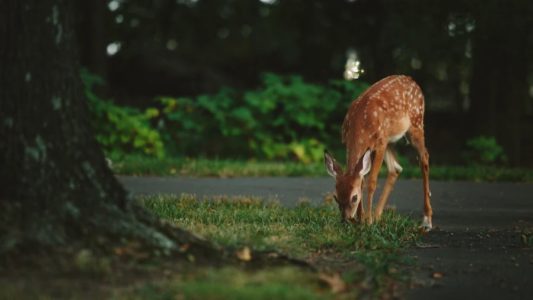1. Keep your windshield and headlights clean
A clean windshield and headlights will go a long way in keeping you safe from wildlife collisions. Your windshield serves as your main vantage point from your vehicle, so ensuring it is clean allows you to keep an eye out for animals in front of you or at the sides of the roads. Many animals tend to be most active around roads during dawn and dusk, so having a pair of high-quality, well-maintained headlights allows you to see what’s ahead, as clearly as possible, no matter how dark it may be outside.
2. Slow down in curves and downhill slopes
Driving around curves and leading up to downhill slopes limits your visibility of what’s ahead. It is important to slow down when approaching these areas, especially if you are driving somewhere with a large wildlife population. By lowering your speed, you allow yourself more time to check your surroundings and are able to stop your vehicle much quicker if animals are in the way or walking too close to the road.
3. If you see one animal, be prepared to see more
Wild animals often travel in packs, so if you see one, you should expect more are nearby. Many animals will try to be stealthy and are nervous around humans, so they may hide themselves in bushes or trees. Always drive with extreme caution if you know there are animals in the area, because they could jump out from anywhere at any time, especially if panicked.
4. Use your brakes if an animal is in your way
If an animal is in your way, you should always use your brakes. Never accelerate your vehicle or try to swerve around the animal, as this increases the risk of a collision, not only with wildlife, but also if you veer off the road or into oncoming traffic. Be patient and stop your vehicle, then deal with the situation before proceeding.

How the Demerit Point System Works in Ontario
Demerit points are used to keep the roads safe by revoking licence privileges from repeat-offenders or drivers who commit serious infractions. As a driver in Ontario, you will receive a warning letter if you accumulate 6-8 demerit points, a second warning letter for 9-14 demerit points, and a 30-day licence suspension for 15 or more




